
Friends of Padre Steve’s World,
I will take a momentary break from all things Trump and everything else to wish all United States Marines a Happy 245th Birthday.
Honestly, after all that we have been through as a country this year, today is one of these days where I just want to wish people well. Those men and women are those of the United States Marine Corps, with whom I have have spent almost ten years of my thirty-five year military career assigned to or in support of as a chaplain. Today is the 245th anniversary of the establishment of the Marine Corps and its founding at Tun Tavern, in Philadelphia. Tonight I wish all those who have served as Marines past, present and future, especially those who I have served alongside a happy birthday. That includes my Nephew Darren stationed with a squadron at Marine Corps Air Station Yuma Arizona.

On November 10th 1775 the Continental Congress passed a resolution that stated:
Resolved, that two Battalions of Marines be raised consisting of one Colonel, two Lieutenant Colonels, two Majors & Officers as usual in other regiments, that they consist of an equal number of privates with other battalions; that particular care be taken that no persons be appointed to office or enlisted into said Battalions, but such as are good seamen, or so acquainted with maritime affairs as to be able to serve to advantage by sea, when required. That they be enlisted and commissioned for and during the present war with Great Britain and the colonies, unless dismissed by Congress. That they be distinguished by the names of the first & second battalions of American Marines, and that they be considered a part of the number, which the continental Army before Boston is ordered to consist of.
The history of the Marine Corps is one of the most fascinating of any armed service in the world. Starting out as a tiny force attached to Navy ships and shipyards the Corps has gained prominence as one of the premier fighting forces ever assembled. Flexible and deployable anywhere in the world on short notice the Marine Corps has seen action in “every place and clime” and continues to serve around the world.
In 1775 a committee of the Continental Congress met at Philadelphia’s Tun Tavern to draft a resolution calling for two battalions of Marines able to fight for independence at sea and on shore. The resolution was approved on November 10, 1775, officially forming the Continental Marines. The first order of business was to appoint Samuel Nicholas as the Commandant of the newly formed Marines.


The Marines served on the ships of the Navy in the Quasi-wa with France, against the Barbary Pirates where a small group of 8 Marines and 500 Arabs under Lieutenant Presley O’Bannon made a march of 500 miles across the Libyan Desert to lay siege Tripoli but only reached Derna. The action is immortalized in the Marine Hymn as well as the design of the Marine Officer’s “Mameluke” Sword. They served in the War of 1812, the Seminole Wars and in the Mexican-American War where in the storming of the on Chapultepec Palace they continued to build and enduring legacy. In the months leading up to the Civil War they played a key role at home and abroad. In October 1859 U.S. Army Lieutenant Colonel Robert E. Lee led Marines from the Marine Barracks Washington DC to capture John Brown and his followers who had seized the Federal Armory at Harper’s Ferry.

The Corps served on through the Civil War and on into the age of American Expansion serving in the Spanish American War in the Philippines, Puerto Rico and Cuba where they seized Guantanamo Bay at the battle of Cuzco Wells. The would serve in China and be a key component of the international force that defended foreign diplomats during the Boxer Revolt as well as the international force that would relieve the diplomatic compound in Peking (Beijing).
In World War One the Marines stopped the German advance at Chateau Thierry and cemented their reputation as an elite fighting force at Belleau Wood where legend and myth has it that the Germans nicknamed them Teufelhunden or Devil Dogs, a name that they Marines have appropriated with great aplomb.











After the war the Truman Administration sought to eliminate the Marine Corps but the Corps was saved by the efforts of Americans across the country and Marine supporters in Congress. That was a good thing because the Marines were instrumental in keeping the North Koreans from overrunning the South during the Korean War on the Pusan Perimeter, turned the tide at Inchon and helped decimate Communist Chinese forces at the Chosin Reservoir. After Korea the Marines would serve around the World in the Caribbean and Lebanon and in Vietnam where at Da Nang Keh Sanh, Hue City, Con Thien fighting the North Vietnamese and their Viet Cong allies. The Marines took the initiative to implement innovative counter insurgency measures such as the Combined Action Platoons which enjoyed tremendous success until they were shut down by the Army high command. These lessons would serve the Marines well in the new millennium during the Anbar Awakening in Iraq which changed the course of that insurgency and war.



The Marines would again be involved around the World after Vietnam serving in the Cold War, in Lebanon and the First Gulf War which was followed by actions in Somalia, the Balkans and Haiti. After the attacks of September 11th 2001 the Marines were among the first into Afghanistan helping to drive the Taliban from power. In the Iraq Campaign the Marines had a leading role both in the invasion and in the campaign in Al Anbar Province. After their withdraw from Iraq the Marines became a central player in Afghanistan where they were engaged around Khandahar and in Helmand Province. In the wake of the ISIS gains in Syria and Iraq the Marines returned to Iraq serving to help train and advise Iraqi Army units in areas of Al Anbar Province and other areas of that country. Likewise they have participated in many humanitarian operations across the Globe where working alongside side the United States Navy, Host Countries, and countless international Humanitarian Relief agencies. If by some chance war breaks out on the Korean Peninsula, Marines will be among the first to respond.
The Marines are elite among world military organizations and continue to “fight our nations battles on the air and land and sea.” The Corps under General John LeJeune institutionalized the celebration of the Marine Corps Birthday and their establishment at Tun Tavern. General LeJeune issued this order which is still read at every Marine Corps Birthday Ball or observance:
MARINE CORPS ORDER No. 47 (Series 1921)
HEADQUARTERS
U.S. MARINE CORPS Washington, November 1, 1921
The following will be read to the command on the 10th of November, 1921, and hereafter on the 10th of November of every year. Should the order not be received by the 10th of November, 1921, it will be read upon receipt.
On November 10, 1775, a Corps of Marines was created by a resolution of Continental Congress. Since that date many thousand men have borne the name “Marine”. In memory of them it is fitting that we who are Marines should commemorate the birthday of our corps by calling to mind the glories of its long and illustrious history.
The record of our corps is one which will bear comparison with that of the most famous military organizations in the world’s history. During 90 of the 146 years of its existence the Marine Corps has been in action against the Nation’s foes. From the Battle of Trenton to the Argonne, Marines have won foremost honors in war, and in the long eras of tranquility at home, generation after generation of Marines have grown gray in war in both hemispheres and in every corner of the seven seas, that our country and its citizens might enjoy peace and security.
In every battle and skirmish since the birth of our corps, Marines have acquitted themselves with the greatest distinction, winning new honors on each occasion until the term “Marine” has come to signify all that is highest in military efficiency and soldierly virtue.
This high name of distinction and soldierly repute we who are Marines today have received from those who preceded us in the corps. With it we have also received from them the eternal spirit which has animated our corps from generation to generation and has been the distinguishing mark of the Marines in every age. So long as that spirit continues to flourish Marines will be found equal to every emergency in the future as they have been in the past, and the men of our Nation will regard us as worthy successors to the long line of illustrious men who have served as “Soldiers of the Sea” since the founding of the Corps.
JOHN A. LEJEUNE,
Major General
Commandant
I have had the privilege to have served with the Marines directly or indirectly for nearly ten of the thirty-seven years that I have served in the military. In addition to that I wear the Fleet Marine Force Officer Warfare Qualification device and I am a graduate of the Marine Corps Command and Staff College. I have been able to celebrate the Marine Corps Birthday with Marines in places like Ramadi and Guantanamo Bay. For me it is an honor to have served with so many great Americans.
So to all my Marine Corps friends, and any other Marines who read this piece, have a great night and Semper Fidelis.
Peace
Padre Steve+


























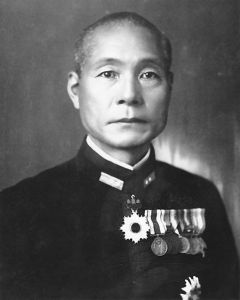


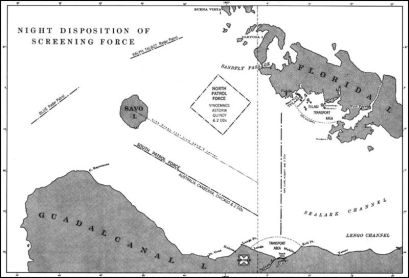


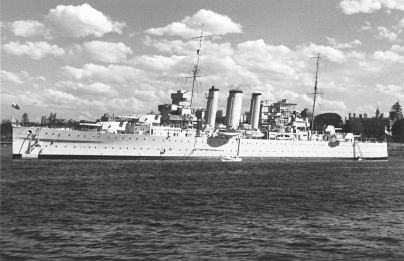
































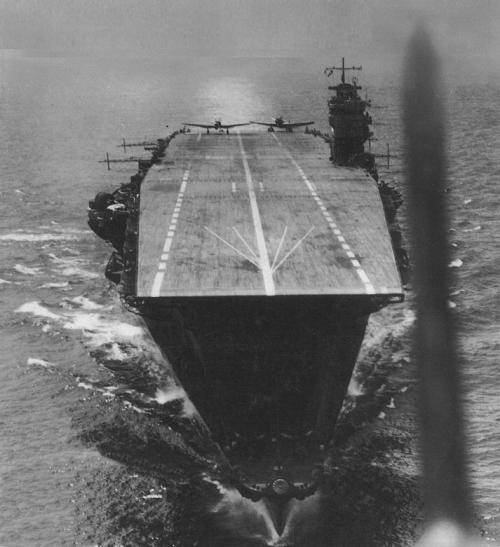


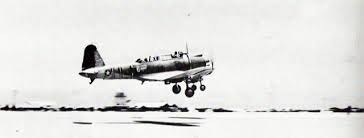
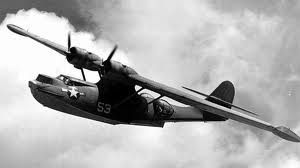
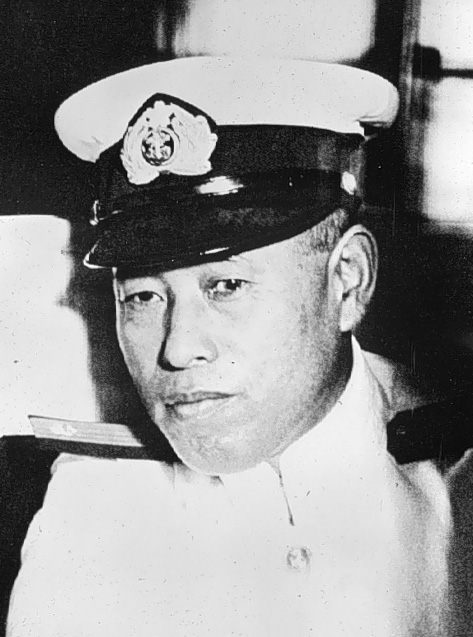











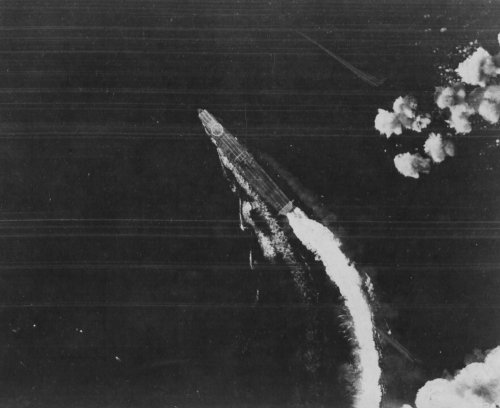




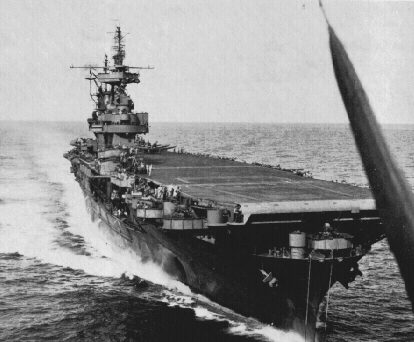

A Time to Stand against the Coming Coup of the Trump Cult
Munich Police Defeat Hitler’s Bier Hall Putsch at Odeonsplatz
Friends of Padre Steve’s World,
As the evidence continues to mount that President Trump and his nefarious Cult which encompasses most of the GOP minority in the House of Representatives and many Senators, as well as thousands of violent heavily armed Neo-Nazis, White Supremacists, Fascists, and conspiracy theorists are plotting a Coup to keep Trump in power it is time for every American who stands for our Constitution and Republic to resist them.
Even a few weeks ago most people brushed off the words of Trump and the words and violent actions of his Cult members including the Proud Boys, the Bugaloo Boys, QAnon followers, Christian theocrats, so called self proclaimed Militia outfits, Neo-Nazis, Klansmen, Anti-Semites and other authoritarians with a grain of salt.
But our Founders were always concerned about such movements. Historian Timothy Snyder noted in an interview with Sean Illing: “We think that because we’re America, everything will work itself out. This is exactly what the founders refused to believe. They thought human nature is such that you have to constrain it by institutions. They preferred rule of law and checks and balances.”
That is not the way of President Trump and his violent Cult. On March 14th of 2020 Trump proclaimed:
“I can tell you I have the support of the police, the support of the military, the support of the Bikers for Trump – I have the tough people, but they don’t play it tough — until they go to a certain point, and then it would be very bad, very bad,”
However, since Trump’s indisputable loss in the election by over 7 million popular votes and a wide majority in the Electoral College he has become ever more desperate. His legal team filed over 60 lawsuits to challenge election results all of which were shot down in flames with prejudice because there was no evidence of voter fraud. While those lawsuits were going on and recounts were being conducted Trump supporters threatened election officials, and even Republican judges in the contested states. Even after the recounts, in the case of Georgia three of the, still showed that Joe Biden won, the results were certified, and the electors voted, the threats kept coming.
In her book The Origins of Totalitarianism Hannah Arendt wrote something that is completely descriptive of Trump and his followers: “The ideal subject of totalitarian rule is not the convinced Nazi or the dedicated communist, but people for whom the distinction between fact and fiction, true and false, no longer exists.”
Each day they got more menacing. Now the President has issued a call to his followers to gather and disrupt the ceremonial count of the electors in Congress on Wednesday. At least 12 Senators and over 100 GOP Congressmen and women have said that they would object to the count, which at best will delay the final certification by a few hours. However, there is nothing in the Constitution that allows Congress to overturn elections held in the various states. That is a fact. It is part of our Federalist structure of government which gives states certain powers not ascribed to the Federal Government. Congress cannot overturn certified election results in any state.
The German pastor, theologian and martyr, Dietrich Bonhoeffer who was killed on the express order of Adolf Hitler wrote:
“The fearful danger of the present time is that above the cry for authority, be it of a Leader or of an office, we forget that man stands alone before the ultimate authority and that anyone who lays violent hands on man here is infringing eternal laws and taking upon himself superhuman authority which will eventually crush him. The eternal law that the individual stands alone before God takes fearful vengeance where it is attacked and distorted. Thus the Leader points to the office, but Leader and office together point to the final authority itself, before which Reich or state are penultimate authorities. Leaders or offices which set themselves up as gods mock God and the individual who stands alone before him, and must perish.”
The fact that so many GOP Senators and Representatives are willing to follow Trump into the abyss of his Götterdämmerung shows that they stand against the Constitution and are willing to violate their oaths all in the service of a criminal President. The President’s criminality was on full display last weekend as he was exposed as he attempted to browbeat, bludgeon, and threaten the Georgia Secretary of State and his Chief Counsel to change the votes cast in the election. That is a felony and the men he was threatening were Republicans who voted for him and wanted him to win, but have the integrity and honor to remain faithful to their oaths and obey the law. The same is true in Arizona, Nevada, Pennsylvania, Michigan, and Wisconsin. In all those states elected officials upholding the law and their oaths were and are continuing to be threatened with violence.
Arendt also wrote about the Germans of the Nazi era words that are frightening when one takes a look at the hold that Trump and his propagandists on Fox News, Newsmax Television, OAN, talk radio, and on thousands of fake news conspiracy theory websites and podcasts proclaim:
“In an ever-changing, incomprehensible world the masses had reached the point where they would, at the same time, believe everything and nothing, think that everything was possible and that nothing was true. … Mass propaganda discovered that its audience was ready at all times to believe the worst, no matter how absurd, and did not particularly object to being deceived because it held every statement to be a lie anyhow. The totalitarian mass leaders based their propaganda on the correct psychological assumption that, under such conditions, one could make people believe the most fantastic statements one day, and trust that if the next day they were given irrefutable proof of their falsehood, they would take refuge in cynicism; instead of deserting the leaders who had lied to them, they would protest that they had known all along that the statement was a lie and would admire the leaders for their superior tactical cleverness.”
Over the past five years the President has made multiple threats to unleash his followers on opponents. Trump’s statements to that effect are so numerous that I have lost count of them. They began during his campaign and haven’t stopped, in fact they have only gotten worse and on June 1st 2020 he led a violent attack on peaceful protesters by officers of a number of Federal police agencies in Lafayette Park and the historical Saint John’s Church for a photo opportunity outside the Church. It was one of the most lawless acts ever committed by an American President against the American people.
Now we stand at the precipice of violence and insurrection incited by a lame duck President. If Vice President Pence whose life has been threatened by these people had a single working testicle or a couple of solid vertebrae in his back he would move to invoke the 25th Amendment and remove Trump from power, but Pence is not a man of courage or honor. Since Pence claims to be a Christian that is even more damning. Not only does he defy his duties under the Constitution, but his obligations to the truth as a Christian. Unfortunately, the Christian faith he represents is theocratic, authoritarian and undemocratic. In fact his version of Christianity is little different than the German Christian movement that wholeheartedly threw itself into supporting Hitler. Jesus Christ is not their God, just a slogan to make them feel good, their God is Trump which is the very definition of idolatry.
Yesterday, the ten living former Secretaries of Defense including former Vice President Dick Cheney all published and signed a letter about the existential threat of Trump to the Republic. That demonstrates the seriousness of what they see on the horizon.
Supporters of President Donald Trump rally outside the Maricopa County Recorder’s Office Friday, Nov. 6, 2020, in Phoenix. (AP Photo/Ross D. Franklin)
A coup to overthrow the Constitution of the United States, overturn a free and fair election that Donald Trump lost, and to overthrow the Republic is gaining momentum. It is no different than 1860 when eleven Southern States seceded from the Union and brought about the most deadly war in American history. Senator Stephan A. Douglas who lost the election to Abraham Lincoln when the Democratic Party split into a pro-slavery Southern faction worked as hard as he could to prevent secession after his loss. He could not stop secession and went back to Illinois where he proclaimed:
“There are only two sides to the question. Every man must be for the United States or against it. There can be no neutrals in this war, only patriots – or traitors”
Armed pro-trump militia members demonstrate in Louisville Kentucky on the day of the famous Kentucky Derby, which is held in the city.
Today the Party of traitors are not Jefferson Davis’s Southern Democrats, but the Dixiecrats and theocrats who took over the Republican Party and sold their souls to Donald Trump. Trump didn’t start this, he merely took advantage of a party that grew more unhinged by the decade beginning in the 1960s. Today the Republican Party is not the party of principled conservatism, it is a radical authoritarian party with dreams of dictatorship and most of Trump’s followers imbibe of the falsehoods proclaimed by him, his administration, supporters in Congress and media propagandists proclaim. William Shirer was one of the few American news correspondents in Hitler’s Germany following the Nazi takeover to the German declaration of war against the United States wrote of his experiences with the German Press, propagandists, and people:
“In an ever-changing, incomprehensible world the masses had reached the point where they would, at the same time, believe everything and nothing, think that everything was possible and that nothing was true. … Mass propaganda discovered that its audience was ready at all times to believe the worst, no matter how absurd, and did not particularly object to being deceived because it held every statement to be a lie anyhow. The totalitarian mass leaders based their propaganda on the correct psychological assumption that, under such conditions, one could make people believe the most fantastic statements one day, and trust that if the next day they were given irrefutable proof of their falsehood, they would take refuge in cynicism; instead of deserting the leaders who had lied to them, they would protest that they had known all along that the statement was a lie and would admire the leaders for their superior tactical cleverness.”
After January 20th the blood orgy of the Trump Cult will continue as they work to destroy the remaining conservatives in the GOP and probably destroy the Party in the process. It will be like the Night of the Long Knives, but they won’t have help from the military.
Make no mistake. There can be no more sitting on the fence hoping that things will blow over and return to normal as much as all of us, including me would like them to be. The next few days and the days leading to January 20th will be critical to the survival of the country our Framers painstakingly crafted together. What they created wasn’t perfect, the Union had flaws, especially in regards to slavery and our treatment of the peoples of our First Nations, but it was an experiment meant to see the continued increase of liberty for all.
If Trump and his Cult succeed in their plans the country we know is dead. In 1933 old line German Conservatives led by former Chancellor Franz Von Papen had President Hindenburg appoint Adolf Hitler as Chancellor of Germany. In less than five months all of their political parties were dissolved and Hitler’s Nazis took sole power. A year later, Hitler turned on his former allies in the Night of the Long Knives, killing hundreds of his most loyal supporters, as well a German conservative leaders and some senior military officers.
I am now convinced that between January 6th and 20th we will see a wave of political violence and unrest we have never known in this country. I dearly want to be wrong, but when I look at Trump’s actions and statements, the violence already being committed by his followers, and the proliferation of threats by them against all opponents or those they suspect of not being loyal enough to Trump, I know worse is to come.
Yale Historian Dr. Timothy Snyder wrote:
“The European history of the twentieth century shows us that societies can break, democracies can fall, ethics can collapse, and ordinary men can find themselves standing over death pits with guns in their hands. It would serve us well today to understand why.”
That warning is now becoming a reality unless real patriots be the liberal or conservative are willing to stand up and be counted. That especially matters for police and military leaders. General Ludwig Beck the Chief of Staff of the German Army in 1938 resigned in protest over Hitler’s decision to invade Czechoslovakia. In retirement he became part of the resistance against Hitler and on the night of July 20th 1944 when the attempt to kill Hitler and take over Germany failed he was faced with immediate execution or the chance to kill himself. He attempted to kill himself but was just badly wounded and was finished off by an executioner. However before the attempt was made he sounded a warning to military and police personnel about duty to their country against a dictator. He wrote:
“Final decisions about the nation’s existence are at stake here; history will incriminate these leaders with bloodguilt if they do not act in accordance with their specialist political knowledge and conscience. Their soldierly obedience reaches its limit when their knowledge, their conscience, and their responsibility forbid carrying out an order.”
I pray that over the next 15 days that true patriotism and loyalty to the Constitution prevails. If it doesn’t our country is doomed.
So until tomorrow,
Peace,
Padre Steve+
Share this:
7 Comments
Filed under Climate change,, Coronavirus 19 Pandemic, crimes against humanity, economics and financial policy, ER's and Trauma, faith, healthcare, holocaust, Korean Conflicts, life, mental health, middle east, norfolk tides, political commentary, pro-life anti-abortion, suicide, terrorism, US Marine Corps, west virginia, White nationalism, world war two in the pacific
Tagged as adolf hitler, bugaloo boys, death squads, dietrich bonhoeffer, Donald Trump crimes, donald Trump cult, einsatzgruppen, franz von papen, general ludwig beck, Hanna Arendt, neo-nazis, night of the long knives, president donald trump, Proud boys, QAnon, stephen douglas, timothy snyder, white nationalist militias, white supremacists, William Shirer